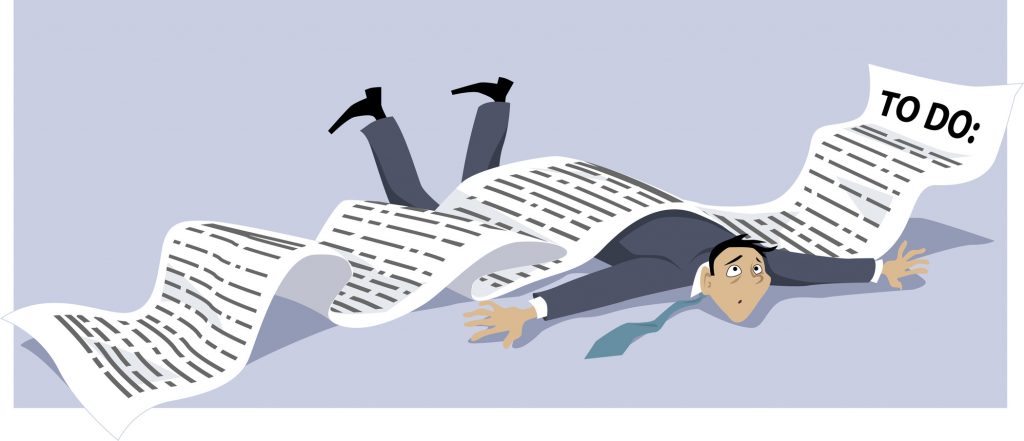How I wish that there was more than 24 hours in the day…
And so the line goes in the Bruce Springsteen song – “Viva Las Vegas” ….do you feel like there are never enough hours in the day to get things done? You are not the only one. Time management is one issue that seems to affect most of us, both personally and professionally.
How often do you say or hear the following? “I’m rushed off my feet” “I don’t have enough time” “I’m always late” and my personal favorite, “I have too much to do”.
When I initially began to write this article, the idea was to suggest different means and methods to help you manage your time. However, as I began to research and test some of them, I realized that there was another way to approach time management – before considering the typical tools and techniques.
The first question to ask is not “what are the best tools and methods to help me?” but rather “What are the real reasons why I have a problem managing my time?”
Your answer could include one, some or all of the following:
1. Getting distracted managing time
2. Not being assertive or able to say “no.”
3. Setting too many “to dos.”
4. Lack of self-care.
5. Things going wrong.
6. Not delegating.
7. Doing too many things at once.
Then we have probably the most common cause of internal sabotage to effective time management, and the one we are going to consider today –

Not actually wanting to do the task.
This is the biggest challenge in time management for many people and can be the most complex. When you look at your “to dos”….are there things you have been putting off, avoiding or basically don’t want to do? This can really affect how you manage the hours in a day. We have issues with getting things done, when we really don’t want to do them! Perhaps it is not so much a lack of hours in the day, but not enough tasks that you actually feel inspired to undertake.
So what are some of the common reasons why you don’t want to do something? Perhaps you think the task will be difficult or complicated or it’s boring and repetitive. The risk of making a mistake or the possibility of negative outcome can also affect our desire to take action. Maybe it’s a dirty job, involves physical effort or you just simply don’t like doing it! No matter how many calendars, reminders and lists you write, if you really don’t want to do something, time management tools will probably not help you get it done easily.
So what can you do to ease the feeling of not wanting to do something? A good starting point is to ask: “Do believe I have to do this”? If the answer is yes, then ask why? For example, perhaps you believe that there is no choice but to file a tax return – because it’s a legal obligation and you will get in trouble if you don’t… or you have a family responsibility with a young child depending on you to take care of them. Maybe it’s a work project with a deadline, a sink full of dirty dishes or a car that needs servicing. Whatever the task, consider why you feel you have to do it.
Then ask what the outcome would be if you didn’t do it? If the resulting scenario sets your heart racing as you imagine being in prison for tax evasion, a lost, crying child or a car crash on the motorway – then it is probably best for you to accept that this task is important and that you are choosing to do it.
Once you understand and accept that the motivation to do the task is greater than not doing it, you can deal with it in a different way. Instead of driving yourself by fear or obligation try a lighter, more positive attitude:
1. Inspire yourself
Rather than worst-case scenario thinking, imagine having completed the chore or assignment already. See yourself pressing the send button for your tax return to file online. Picture a happy child eating dinner or your boss congratulating you on a finished project. Visualise your partner’s smile as he/she arrives home after a long day to find a clean kitchen. Try and create these feelings before you start the task. How will you feel once you have done it? What will be the personal impact for you? A sense of accomplishment, relief, pride, lightness, joy? Inspiring yourself in this way to get through a list of “to dos” is a much more pleasant way to move through your busy day.
2. Simplify things
If it seems like a difficult job is there any way you can make it easier? Can you break it down into smaller steps or chunks? Could you do one part today and another tomorrow? What about getting help or advice? Are there any tools or applications that would make things more straightforward? Also, seemingly complicated projects can actually end up being more straightforward that you originally thought once you get started.

3. Take regular breaks
(Adapted from Cirillo’s “Pomodoro Technique”). This is most effective when you are working on a time-consuming task on your own. Every 20 minutes or so stand up and move away from the desk/computer or walk out of the room you are working in. Stretch your arms above your head, take a deep breath, give your arms and legs a quick shake. This is great for re-energising when you feel tired or need to refocus.
4. Create a reward system
This is a form of positive reinforcement and it can keep you inspired when deadlines are looming. Say to yourself – “If I spend the next half hour writing this monthly report then at 3 pm I will stop, reward myself with a nice glass of juice/ten minutes on Facebook/writing up some creative ideas.” Or “once I have run my household errands I am going to take five minutes to have a cup of coffee/phone a friend/buy myself something nice.”

5. Alternate with your choices of tasks
This suggestion does not follow any of the typical time prioritizing methods but it really works for me when I can’t seem to get things done. Do one job that you don’t particularly want to do and then follow it by doing something that you want to do, and so on. It is similar to the reward system in that the promise of getting to do something you like in the future keeps you on track.
So, hopefully, this article has encouraged you to explore and ultimately improve your approach to managing your daily task list. If you take a preliminary step to address the deeper meaning of “why?” before you apply or set up any tool or programme, you will be more likely to get sustainable results.
Of course, there are still seven more sabotages to consider in this “think beyond task” approach. Unfortunately, however, I seem to have run out of time, so you will have to wait until next month to get some more useful insights and suggestions in part two.

MAIKE STOLTE
Executive Coach. Consultant. Trainer. Facilitator.
Categories
Contact us

Burnout. COVID. New Normal: How to get yourself back into balance & recover!
By now, most of us share a similar feeling: we feel drained. For months now, we have been bravely facing the Covid-19 pandemic. I think it’s fair to say that it has taken its toll on us. No matter your context, you may have been dealing with the stress of the...
Relational leadership: Influence is trusting and being trusted
We are our relationships. When we foster positive relationships, we create positive environments, develop positive projects and bring positive change to the world. This power of relationships is the base of relational leadership, focused on the leader’s ability to...
Insights From Natural Leaders: With Yasmine Khater
We can always find inspiring natural leaders close to us! In this series of interviews, I’m talking to people who have touched my soul: small business owners, neighbors, friends & colleagues. Those who inspire me to spread the wisdom & insights of our common...




